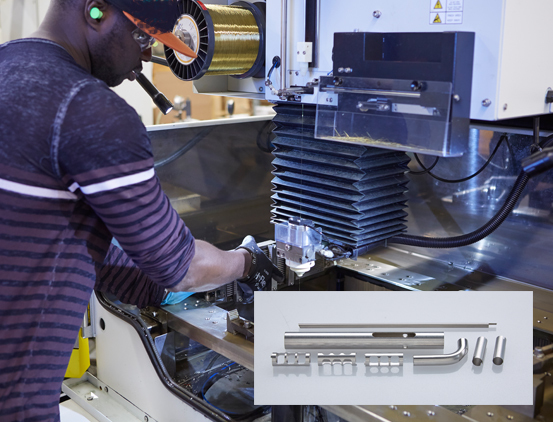 Wire EDM (Electrical Discharge Machining) is a precise manufacturing process that involves the creation of complex shapes through a series of controlled electrical discharges between a thin EDM wire and an electrically conductive material like stainless steel. This method allows for high levels of accuracy and intricacy in the production of various components, making it a favored technique in industries requiring meticulous and intricate parts fabrication. The cutting path of the wire, which is held in place by an upper and lower guide, can be programmed to produce the desired shape. (more…)
Wire EDM (Electrical Discharge Machining) is a precise manufacturing process that involves the creation of complex shapes through a series of controlled electrical discharges between a thin EDM wire and an electrically conductive material like stainless steel. This method allows for high levels of accuracy and intricacy in the production of various components, making it a favored technique in industries requiring meticulous and intricate parts fabrication. The cutting path of the wire, which is held in place by an upper and lower guide, can be programmed to produce the desired shape. (more…)
Welcome to Eagle Stainless! We’ve made it our mission to keep our valued customers informed about the exciting updates within our company, as well as the latest industry news and innovations. In our News page, you can stay up to date with the latest from Eagle Stainless!
What Is the Meaning of ASTM Standard?
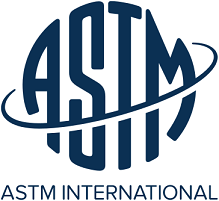
ASTM International is a globally recognized standards organization that develops and publishes consensus technical standards for materials. ASTM was formed in 1898 to address the frequent rail breaks affecting the railroad industry. Originally called the “American Society for Testing Materials” in 1902, it then became the “American Society for Testing and Materials” in 1961 before it changed its name to “ASTM International” in 2001.
(more…)
304 vs. 316 Stainless Steel
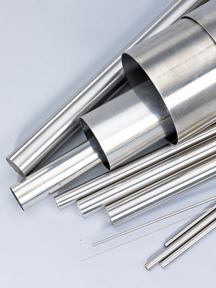
There are more than 60 grades of stainless steel. Stainless steel is essentially low-carbon steel that contains chromium of 10% or more by weight. It is the addition of chromium that gives the steel its unique stainless, corrosion-resisting properties. Austenitic 304 and 316 stainless steels are considered surgical or medical-grade stainless steels, they are the most common stainless steels. The key difference between 304 and 316 stainless steel that makes them different is the addition of molybdenum, an alloy that drastically enhances corrosion resistance, especially for more saline or chloride-exposed environments. 316 stainless steel contains molybdenum, but 304 does not. (more…)
Eagle Stainless Tube & Fabrication Inc. Exhibiting at MD&M East 2018

MD&M East will be hosted on June 12-14, 2018 – Booth 1026
Exhibitor hours – Tuesday & Wednesday 10am – 4pm | Thursday 10am – 3pm
Our Quality Management System
Eagle Stainless has been audited and passed the ISO 9001:2015 and ISO 13485:2016 version for our quality management system.
 ISO 9001 is an international standard for an organization’s quality management system for any industry. These standards help to ensure consistent products to meet customers’ specifications. Eagle first received certification in 1998. Since then there have been revisions every few years.
ISO 9001 is an international standard for an organization’s quality management system for any industry. These standards help to ensure consistent products to meet customers’ specifications. Eagle first received certification in 1998. Since then there have been revisions every few years.
ISO 13485:2016 is the ISO version for the medical device industry. This version was first published in 1996.
(more…)
Eagle Introduces the Robotic Arm to Their Production Floor
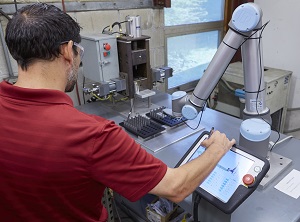 Eagle Stainless Tube & Fabrication has been producing precision metal parts since 1982. Since then Eagle has been delivering some of the most intricately formed parts imaginable. Staying on top of the latest developments and manufacturing trends has always been a priority. Robots have become faster, smarter and cheaper. Eagle’s customers in the medical, aerospace and mechanical industries demand accuracy. Robots can move efficiently while performing tasks at a consistent level of precision. Introducing the robotic arm to Eagle’s production floor to load and unload parts keeps Eagle’s customers’ parts moving and making sure they are exact.
Eagle Stainless Tube & Fabrication has been producing precision metal parts since 1982. Since then Eagle has been delivering some of the most intricately formed parts imaginable. Staying on top of the latest developments and manufacturing trends has always been a priority. Robots have become faster, smarter and cheaper. Eagle’s customers in the medical, aerospace and mechanical industries demand accuracy. Robots can move efficiently while performing tasks at a consistent level of precision. Introducing the robotic arm to Eagle’s production floor to load and unload parts keeps Eagle’s customers’ parts moving and making sure they are exact.
(more…)
Do You Need Tube Ovality, Concentricity or Eccentricity
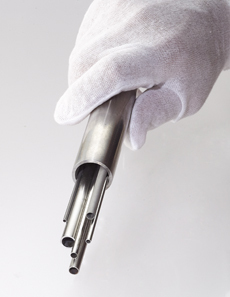
In the realm of manufacturing, the precision and quality of tubes play a pivotal role in determining the success and reliability of various industrial applications. The concepts of tube ovality, concentricity, and eccentricity are crucial factors that significantly impact the performance and functionality of tubes in diverse engineering and manufacturing processes. In this blog, we delve into the intricate details of these key parameters, shedding light on their significance and implications in the manufacturing industry.
Ovality
The ovality of a tube or the difference between the maximum and minimum dimensions of the OD, is obtained by carefully measuring the high and low points at any one section of the tube. The ovality tolerance is considered to be a total spread, inside which both the maximum OD and minimum OD dimensions must fall. When a tube or pipe is bent the tube becomes more oval than round. The flattening that occurs from the bend is called the ovality and this is a specification that is taken into account when calculating the bend.
Concentricity
For most applications, good concentricity is more valuable than good ovality. Parts that need a high precision require close attention to the tube’s concentricity. The concentricity is the variation in the wall thickness. If one tube needs to fit into another then the concentricity is critical. If this is the case, you should let the engineers know the result you are looking for before requesting a quote. A tube that needs to fit inside an opening of another tube will need specifications regarding the OD, ID, and concentricity of all of the tubes for all of those parts to work together.
Concentricity may not be an issue for gasses and liquids to flow throw a tube. In this instance, wall thickness may be the important dimension. The pressure of the liquid or gas flowing through the tube will require an acceptable wall thickness.
Eccentricity
An eccentric tube has the center of the tube formed by the OD which is at a different point from the center formed by the ID, so the 2 dimensions are not concentric. Eccentricity can be checked by determining the wall thickness around the tube at any cross-section to establish the maximum and minimum.
Ovality, concentricity, and eccentricity are just one factor in ordering your tubing. See Eagle’s top 10 tips for ordering tubing where it discusses all you may need to know before determining your critical requirements to requesting a quote.
Passivating Stainless Steel
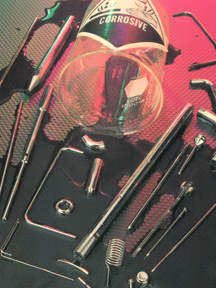
One of the primary considerations in the selection of material is the corrosion resistance and one of the best materials to be selected for this reason is stainless steel due to the natural tendency of the metal to be passive. What is passivation? Passivation is the treatment of the stainless steel with an oxidizing chemical (typically nitric or citric acid) which promotes a thin oxidizing layer to form on the surface of the metal. This thin layer will help protect the metal from chemical attack. (more…)
Difference Between Aluminum and Stainless Steel Pipe and Tube
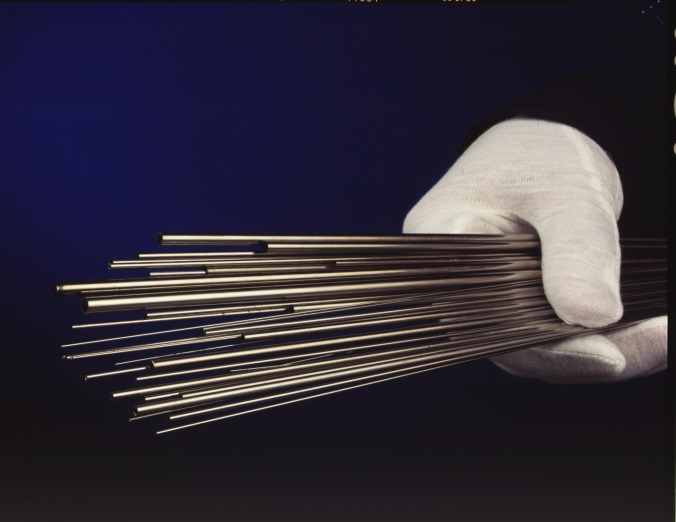 Steel pipe and tubing are everywhere in automotive, aerospace, industrial, architectural, research, and medical applications. The most common elements are aluminum and stainless steel pipe and tube materials, and each has attributes that make it the right choice for a given industry. Once you’ve determined whether you need piping or tubing, next you’ll want to choose the best metal for your application. (more…)
Steel pipe and tubing are everywhere in automotive, aerospace, industrial, architectural, research, and medical applications. The most common elements are aluminum and stainless steel pipe and tube materials, and each has attributes that make it the right choice for a given industry. Once you’ve determined whether you need piping or tubing, next you’ll want to choose the best metal for your application. (more…)
Seamless Pipe Manufacturing
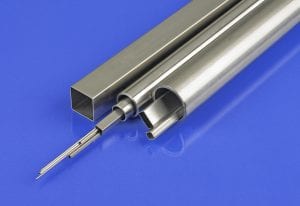
Welded, Welded & Drawn Steel and Seamless Pipe – Eagle Supplies Them All!
The many unique values provided by stainless steel make it a powerful candidate in materials selection. Corrosion resistance, hygiene and strength of stainless steel make it an ideal choice in the Medical, Aerospace and Industrial industries. To learn more about these benefits see here. The two major categories for tubing and pipe are seamless and welded. The major difference being the seam that is on a welded tube and not on a seamless tube just as the names indicate. Seamless pipe has the increased ability to withstand pressure; because there is no weld seam it is equally strong around the entire circumference. On welded tubing the weld seam is not recognized by the naked eye and takes on the appearance of seamless. Welded tubes have excellent concentricity, are more readily available and cost effective for most applications.



